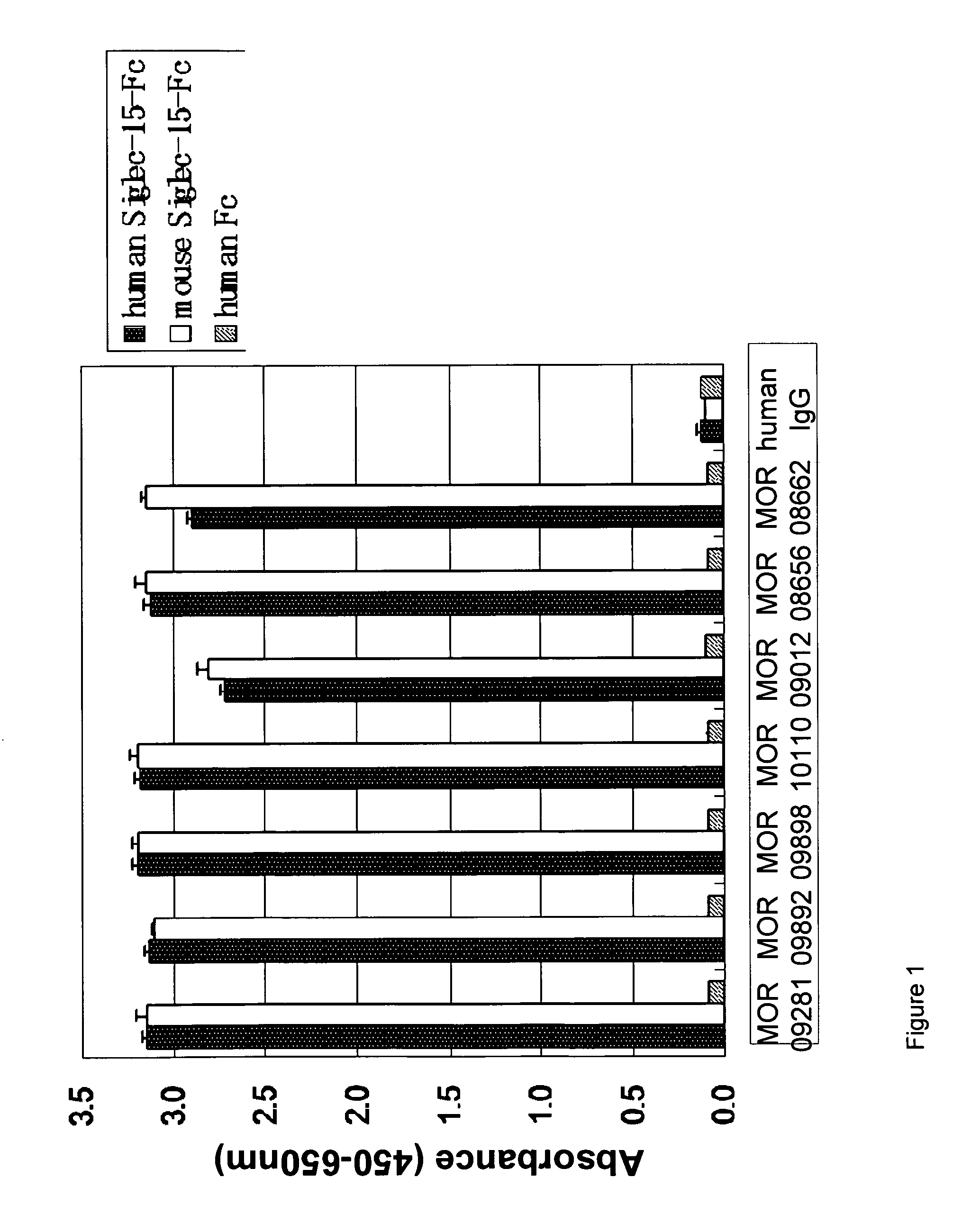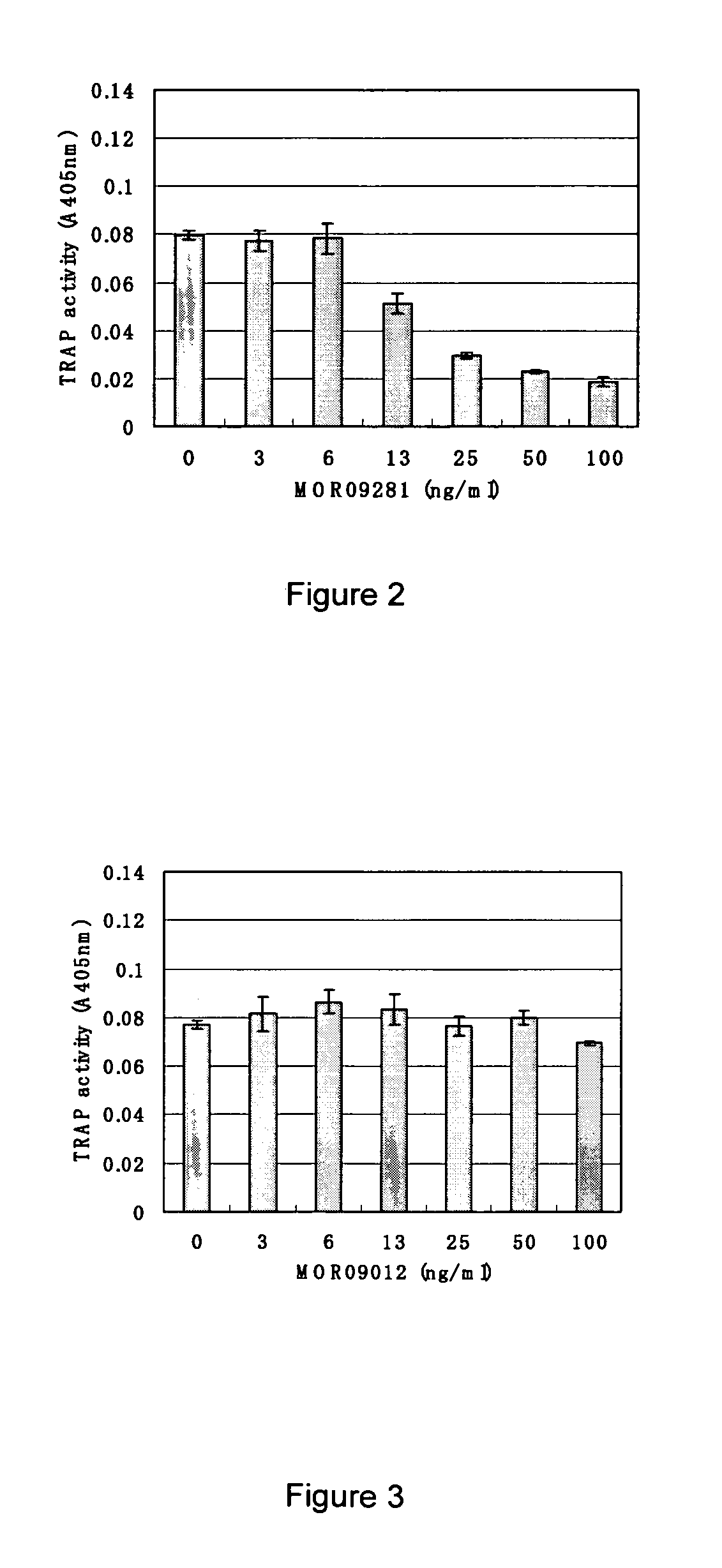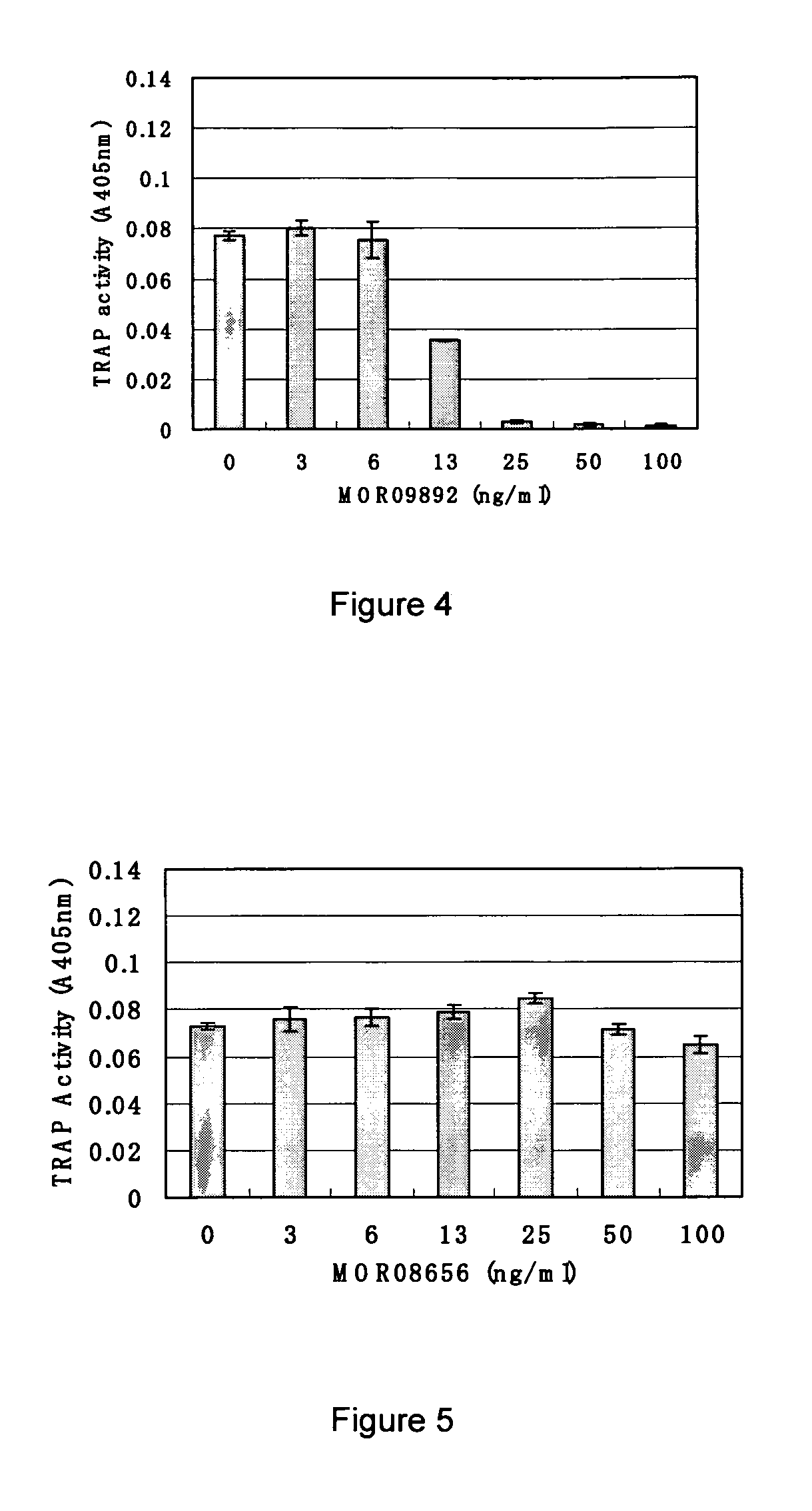Antibody targeting osteoclast-related protein Siglec-15
a technology of antibody and osteoclast, which is applied in the field of antibody targeting osteoclast related protein siglec15, can solve the problems of drug not always showing satisfactory therapeutic effect, bone resorption, and difficult to consider it as a simple age-related physiological phenomenon, and achieve the effect of inhibiting the differentiation and maturation of osteoclasts
- Summary
- Abstract
- Description
- Claims
- Application Information
AI Technical Summary
Benefits of technology
Problems solved by technology
Method used
Image
Examples
example 1
Cell Culture and Transient Transfection
[0179]Human embryonic kidney (HEK) 293FreeStyle™ cells were grown in Freestyle 293 Medium (Invitrogen). For cell pannings, HEK 293FreeStyle™ cells were transfected with plasmid DNAs such as plasmid pcDNA3.1 (+) / human Siglec-15 (encoding human Siglec-15, accession number, Q6ZMC9), plasmid pcDNA3.1 (+) / mouse Siglec-15 (encoding mouse Siglec-15, accession number, NP—001094508) or pcDNA3.1(+) using 293fectin (Invitrogen) according to the supplier's instructions. Transfected HEK 293FreeStyle™ cells were harvested after 2 days-cultivation for further cell panning.
Recombinant Human Siglec-15-Fc and Mouse Siglec-15-Fc Preparation
[0180]An expression vector for soluble human Siglec-15 / phIgFc was constructed by the Gateway technology (Invitrogen). A DNA fragment encoding the extracellular domain of human Siglec-15 (accession number, Q6ZMC9, 1-260) was amplified by PCR to construct an entry clone into pDNOR221 (Invitrogen). Next, an LR reaction was perform...
example 2
Construction, Expression and Purification OF HuCAL® IgG2
A. Conversion to IgG2
[0187]In order to express full length IgG, variable domain fragments of heavy (VH) and light chains (VL) were subcloned from pMORPHx® 9 Fab expression vectors into appropriate pMOPRH® 2_h_Ig vectors for human IgG2. Restriction enzymes MfeI and BlpI were used for subcloning of the VH domain fragment into pMORP® 2_h_IgG2, EcoRV and BsiWI for subcloning of the VL domain fragment into pMORPH® 2_h_Igκ, and EcoRV and HpaI for subcloning of the VL domain fragment into pMORPH® 2_h_Igλ2. Subsequent to ligation, transformation and DNA preparation, the resulting IgG expression plasmids were characterized by restriction analysis and sequencing.
B. Transient Expression and Purification of Human IgG2
[0188]Eukaryotic HKB11 cells were transfected with equal amounts of IgG heavy and light chain expression vector (pMORPH® 2). The cell culture supernatant was generally harvested from 3 to 7 days post transfection. After steril...
example 3
Screening and Antibody Characterization
A. Capture ELISA on Siglec-15-FC
[0189]Wells of a 384-well MaxiSorp™ microtiter plate were coated with goat anti-human IgG (Dianova, Cat#109-005-098, diluted 1:1,000 in PBS). The next day, wells were washed and then blocked with MPBST on a microtiter plate shaker. The wells were washed with PBST before addition of recombinant human or mouse Siglec15-human Fc fusion protein. After incubation, pre-blocked BEL extracts (for preparations refer to Example 1C) or purified Fab / IgG were added. The plate was incubated on a microtiter plate shaker and then washed with PBST.
[0190]For detection of the antigen bound to the captured Fab, the plate was washed with PBST and anti-Fab-AP (Dianova, Cat#109-055-097, 1:5000 diluted in PBS) was added.
[0191]After incubation the plate was washed with TBST, Attophos (AttoPhos Substrate Set, Roche #11681982001, diluted 1:10 in TBS) was added and fluorescence was measured in a TECAN microtiter plate reader (emission: 535 ...
PUM
| Property | Measurement | Unit |
|---|---|---|
| pH | aaaaa | aaaaa |
| pH | aaaaa | aaaaa |
| pH | aaaaa | aaaaa |
Abstract
Description
Claims
Application Information
 Login to View More
Login to View More - R&D
- Intellectual Property
- Life Sciences
- Materials
- Tech Scout
- Unparalleled Data Quality
- Higher Quality Content
- 60% Fewer Hallucinations
Browse by: Latest US Patents, China's latest patents, Technical Efficacy Thesaurus, Application Domain, Technology Topic, Popular Technical Reports.
© 2025 PatSnap. All rights reserved.Legal|Privacy policy|Modern Slavery Act Transparency Statement|Sitemap|About US| Contact US: help@patsnap.com



